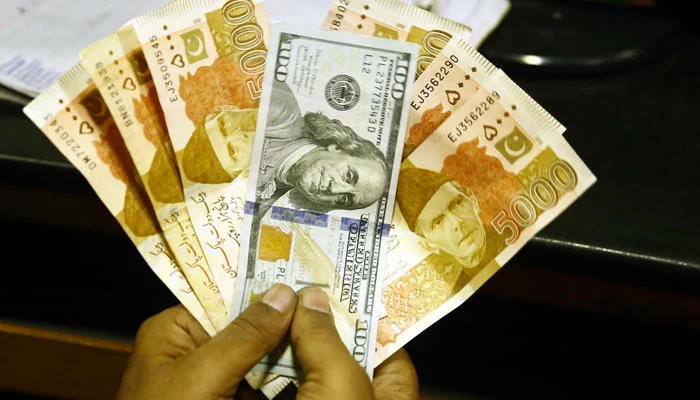Karachi: According to economists cited by The News, the rupee is predicted to continue losing ground against the dollar in 2024 as Pakistan struggles with large repayments of its external debt, diminishing foreign exchange reserves, and anticipated monetary easing.
The rupee has been under pressure for the past seven years, so analysts say that its problems are far from over.
According to a note from brokerage Topline Securities, the local currency has lost 20% vs. the dollar this year, more than the 13% annual average loss over the previous five years and the 8% average over the previous ten years.
Local political unrest, difficult global financial markets, and a lack of external funding have all negatively affected foreign exchange reserves and increased pressure on the
The real effective exchange rate (REER) index indicates that the value of the rupee is low. In contrast to the previous 10-year average of 106.6, the State Bank of Pakistan’s November REER index is currently 98.18.
Topline projects that by June 2024, the currency will drop to 310 versus the dollar in the interbank market due to Pakistan’s external payment risk and other variables. By year’s end, it also predicts that the rupee will fall to 325. On Wednesday, the rupee finished at 282.20 against the dollar, down from its previous closing value of 282.37.
In order to accomplish the reform targets required by the IMF’s credit program, Pakistan has been battling record-high inflation brought on by rising energy prices. Between July and November of FY2024, the mean
Another analyst believes that the rupee could drop to 295-296 vs. the dollar in 2024 due to the impending elections and huge debt commitments that are expected to arise early in the next year. The anticipated monetary easing could cause the rupee to decline even further.
For the current fiscal year, Pakistan is expected to require $28.7 billion in foreign assistance, of which $24.6 billion will be used for debt repayment and $4 billion will be used to finance the current account deficit. Analysts estimate that of this, $5.48 billion has already been reimbursed and $9.3 billion has been agreed to be rolled over.
The $14 billion financing shortfall resulting from this is anticipated to be covered by foreign investments ($1.5 billion), payments made by the International Monetary Fund under its loan program ($3 billion), and







